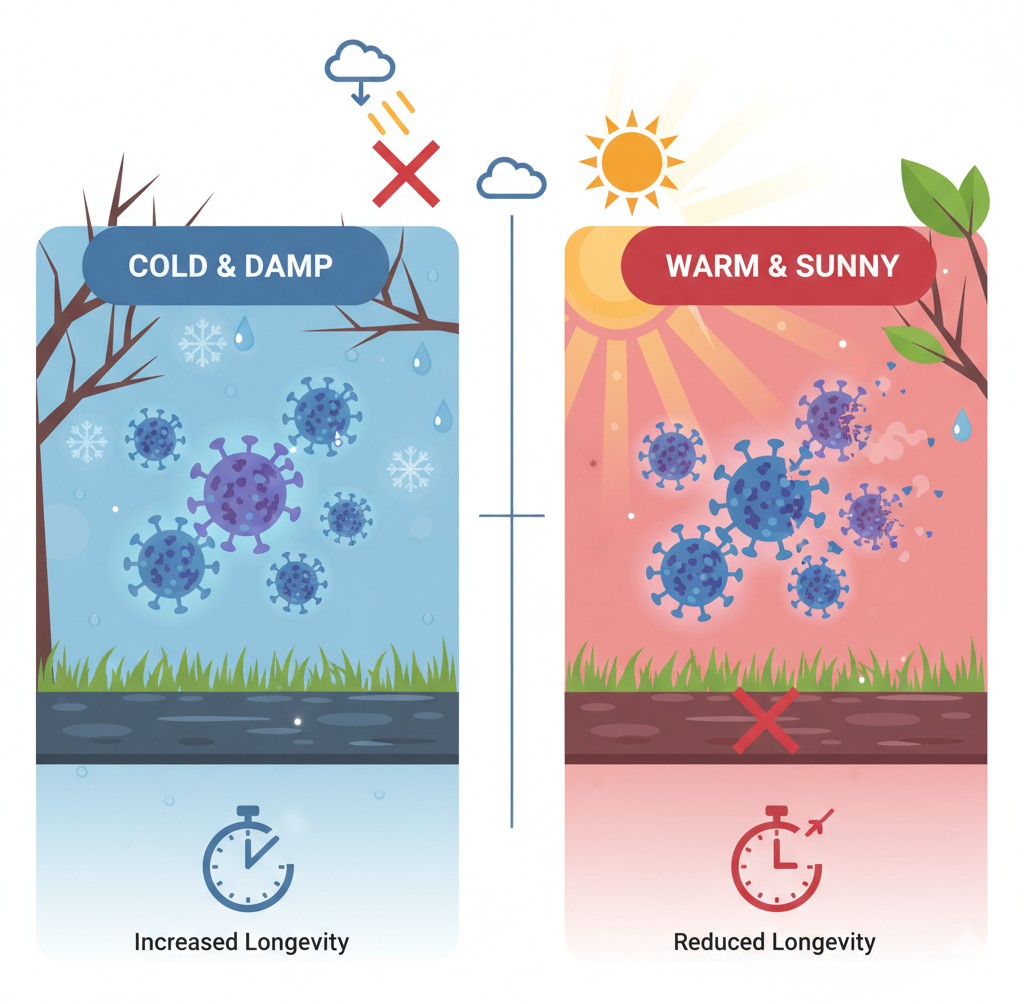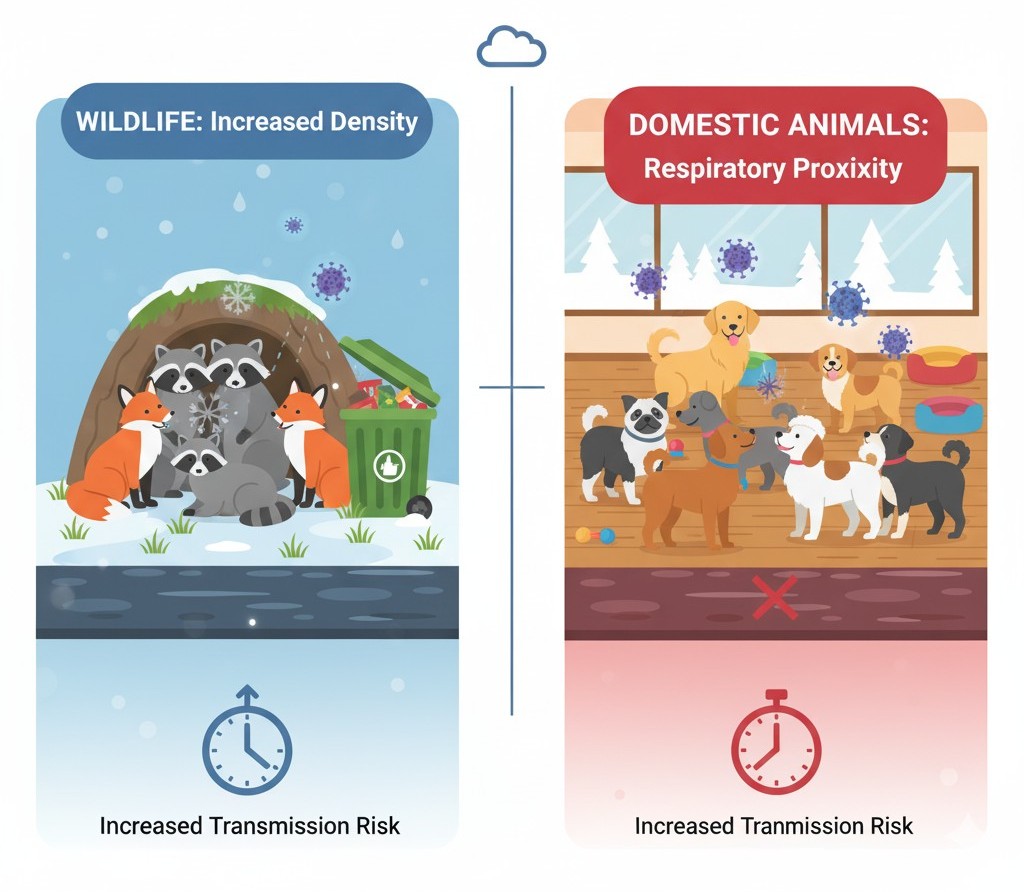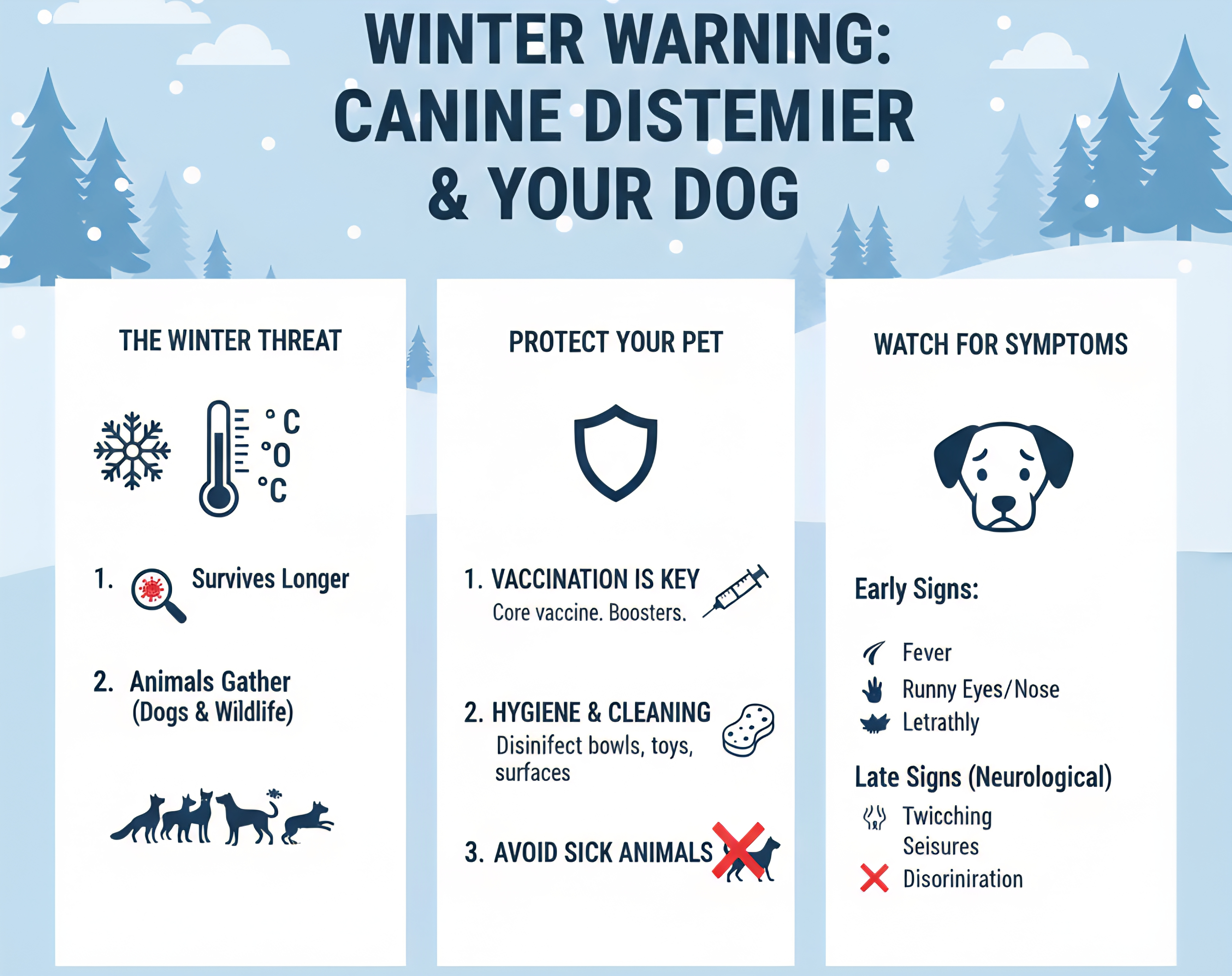Canine distemper virus (CDV) is a highly contagious, serious, and often fatal disease that affects not just domestic dogs but also a wide range of wildlife, including raccoons, foxes, and coyotes.
While this dangerous virus is a year-round threat, veterinarians and wildlife managers frequently report a troubling surge in cases during the late fall and winter months. What is it about the change in seasons that gives this virus the advantage? The answer lies in a combination of environmental resilience and social behavior.
The Viral Advantage: How Cold Helps CDV Survive

Unlike many other viruses that are quickly inactivated by warmth and sunlight, Canine Distemper Virus is surprisingly hardy in cool, damp conditions.
- Increased Longevity: The CDV is an enveloped virus, and generally, enveloped viruses are quite fragile outside a host. However, when temperatures drop near freezing (but are not hot and dry), the virus's external envelope is stabilized, allowing it to survive for much longer in the environment, sometimes for weeks. This means that a patch of grass or pavement contaminated with the bodily secretions of an infected animal remains infectious for a significant period.
- Less Sunlight, More Contamination: Winter days offer fewer hours of strong sunlight. UV light is a natural disinfectant, and the reduction in sun exposure further contributes to the virus's survival on outdoor surfaces and object
The Behavioral Shift: Why Animals Congregate

As temperatures fall, the behaviors of both wild and domestic animals change in ways that increase the risk of transmission:
- Increased Density (Wildlife): In winter, many wildlife species, particularly those highly susceptible to distemper like raccoons and foxes, may be forced to congregate in smaller areas. They seek shared shelter to stay warm or forage in limited, concentrated food sources (like garbage bins or unsecured pet food). Higher population density in a confined space is the perfect condition for an aerosolized virus like CDV to spread rapidly through sneezes, coughs, or shared surfaces.
- Respiratory Proximity (Dogs): While our pet dogs aren't often seeking dens, cold weather can lead to more frequent and close-quarters social interactions. Dog parks, daycare centers, and training classes often see dogs grouped together indoors or in smaller outdoor spaces during the winter months, increasing the chance of direct contact and aerosol transmission.
What You Need to Know: Prevention and Action

The combination of a virus that survives longer in the cold and animals that are forced closer together creates a perfect storm for distemper outbreaks. During this high-risk season, proactive steps are essential.
- The Absolute Best Defense is Vaccination For domestic dogs, vaccination is overwhelmingly the single most effective preventative measure against Canine Distemper. The core distemper vaccine is highly effective at protecting your dog from severe illness and death. Ensure your puppy completes its vaccination series according to the vet-recommended schedule, and that your adult dog receives timely booster shots throughout its life. Never assume immunity, check your dog's records!
- Practice Environmental Disinfection Since the virus can linger on surfaces in cool weather, hygiene is critical.
- Cleaning Indoors: The good news is that CDV is easily destroyed by most common household disinfectants, bleach solutions, and even heat. If your dog comes into contact with a potentially sick animal, thoroughly clean their bedding, bowls, and any contaminated areas.
- Outdoor Gear: Regularly disinfect leashes, toys, and food/water bowls used outside, especially after visiting areas with high dog traffic like dog parks or boarding facilities.
- Watch for Symptoms (Especially in Winter)Distemper is a devastating multi-system disease. Early detection is crucial, though treatment remains supportive. Watch for:
- Early Signs: A biphasic fever (a fever that spikes, drops, and spikes again), lethargy, poor appetite, thick, pus-like mucus discharge from the eyes and nose (ocular and nasal discharge), coughing, and vomiting.
- Later-Stage Signs (Neurological): As the virus attacks the nervous system, symptoms can progress to muscle twitching (known as myoclonus or "chewing fits"), seizures, head tilting, circling behavior, and partial paralysis.
- Wildlife Alert: If you see a raccoon, fox, or skunk acting disoriented, extremely lethargic, or fearless around humans, do not approach it or allow your dog near it.
These neurological signs are often associated with distemper (though they can sometimes be confused with rabies). Contact your local animal control or wildlife authority immediately.
- Understand the Prognosis There is no specific cure for Canine Distemper. Treatment focuses entirely on providing supportive care, managing symptoms like dehydration, fever, and secondary bacterial infections. The prognosis is often poor, particularly for puppies and older, unvaccinated dogs, and even survivors may be left with permanent neurological damage. This fact underscores why prevention is so vital.
A Final Word of Caution
By understanding that winter conditions empower this dangerous virus, allowing it to survive longer and forcing hosts into closer contact, you are better equipped to protect your pet. In the face of a persistent winter threat, your best course of action is always vigilant vaccination, strict hygiene, and prompt veterinary attention if any symptoms appear. Keep your pup warm, safe, and up-to-date on their shots this winter!






